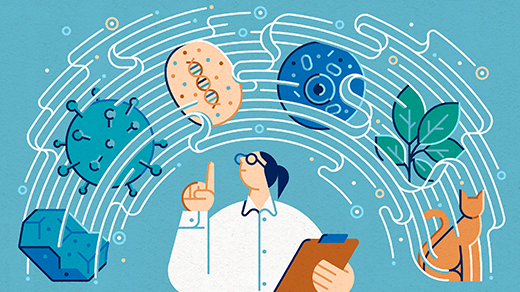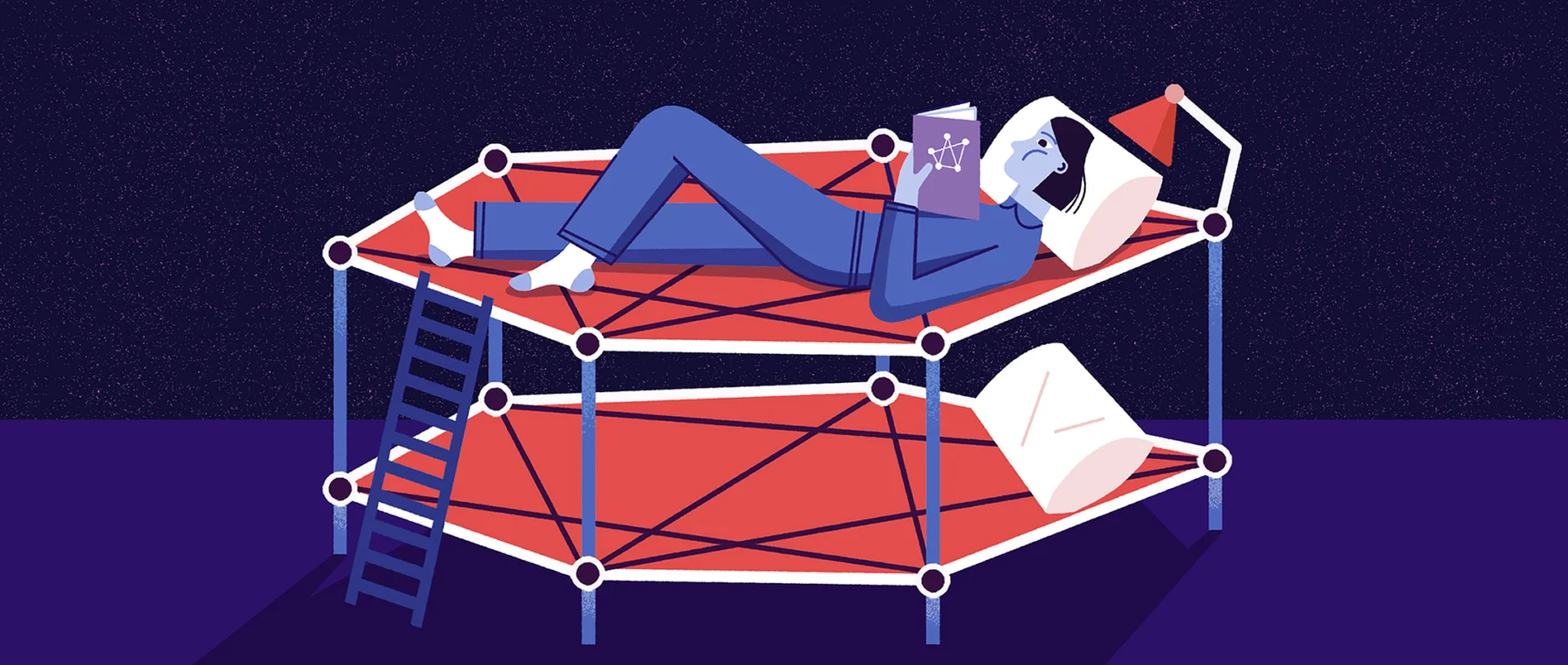He’s Gleaning the Design Rules of Life to Re-Create It
![Yizhi “Patrick” Cai, a man with short black hair and broad eyeglasses, gazes into the distance on the University of Manchester campus.]](https://www.quantamagazine.org/wp-content/uploads/2024/11/Patrick-Cai-cr.DavePhillips-Lede-scaled.webp)
Yizhi “Patrick” Cai, a synthetic biologist at the University of Manchester, is writing a synthetic genome that could be used as a programming substrate for life.
Dave Phillips for Quanta Magazine
Introduction
Say you live in an old house, and you want to make a slew of renovations; at some point, the most efficient way forward is to build a new house altogether. A similar clean-slate approach is the guiding principle behind an international effort to create the world’s first synthetic eukaryotic genome — the set of molecular instructions that govern complex life on Earth, including humans. At present, genetic engineering techniques typically work by taking one of nature’s given genomic templates (the old house) and introducing individual mutations (renovations) to the DNA code. However, the ability to write a genome from scratch would unlock greater creativity in designing a desired genome — your dream home — and producing new kinds of organisms that do things that nature cannot.
“If you see the genome as the operating system of organisms, then writing the genome is basically giving you an opportunity to reorganize the genome and to program living organisms,” said Yizhi “Patrick” Cai of the University of Manchester. In the future, researchers could engineer new cells with novel abilities and greater tolerance for environmental conditions such as heat and drought.
Cai is the coordinator of the Synthetic Yeast Genome Project, a global consortium aimed at redesigning the genome for brewer’s yeast (Saccharomyces cerevisiae). Why yeast? The single-celled fungus is a close cousin to humans, evolutionarily speaking: At least 20% of human genes have a counterpart in yeast. Many cellular processes that unfold in the human body can be replicated in yeast as a research proxy. “Yeast is very important as a model organism for biotechnology and also for human health,” Cai said. He called it “the best-understood organism on this planet,” which gives his team a head start as they work to understand its genomic design.
For researchers drumming up a brand-new genome, the fabrication itself isn’t the hard part; scientists already know how to assemble DNA base pairs into strings. Instead, the main challenge lies in devising a genomic sequence that produces a viable organism. To do that, scientists first need to glean the basic principles and design rules for what makes a working genome, and to identify any pitfalls to avoid.
![Cai wears lab goggles and a white lab coat as he peers at a plate of yeast he holds above him.]](https://www.quantamagazine.org/wp-content/uploads/2024/11/Patrick-Cai-cr.DavePhillips-At-lab.webp)
Cai holds up a petri dish where yeast grow. Yeast is a single-celled fungus that shares its eukaryotic cell type with humans. At least 20% of human genes have a counterpart in yeast, which has made it a useful model organism.
Dave Phillips for Quanta Magazine
The combinatorial space for the yeast genome — natural or synthetic — is vast; exploring it and tweaking each genetic component individually to understand its purpose and context is impractically slow. To accelerate the process, Cai’s team uses a tool called Scramble to probe yeast’s natural genome. It works by engineering yeast cells with the ability to randomize their genomes on command. Shuffling one’s genome is usually fatal business, but some cells might land on a workable combination by chance. Cai’s team can then work out what’s common among the lucky survivors to derive rules for genomic viability. With enough know-how, the researchers can then cobble together a fully synthetic genome that abides by nature’s design rules to produce a working eukaryotic cell.
In November 2023, the project unveiled its latest advance: a synthetic yeast cell with 50% reengineered DNA. More than six of the yeast’s 16 chromosomes were entirely synthetic. One was even a neochromosome — a chromosome that has no natural counterpart. Although this 50% milestone was 10 years in the making, the remaining half of the yeast genome is potentially an easier lift, Cai said, now that the team has the right tools.
Quanta spoke with Cai about programming life, reading and writing the genome like a book, and how wearing a kilt in a New England winter marked a turning point in his career. The interview has been condensed and edited for clarity.
How did you become interested in the world of synthetic biology?
I grew up in China, and I went to school to learn computer engineering. Then, when I joined the University of Edinburgh to do my master’s in robotics and linguistics — that was 2005 — I found a group of people that, instead of trying to program robots, were trying to program bacteria. I was recruited to be part of the team. We participated in this international genetic engineering competition hosted by the Massachusetts Institute of Technology every year. The goal was: Can you program living organisms to do something interesting?
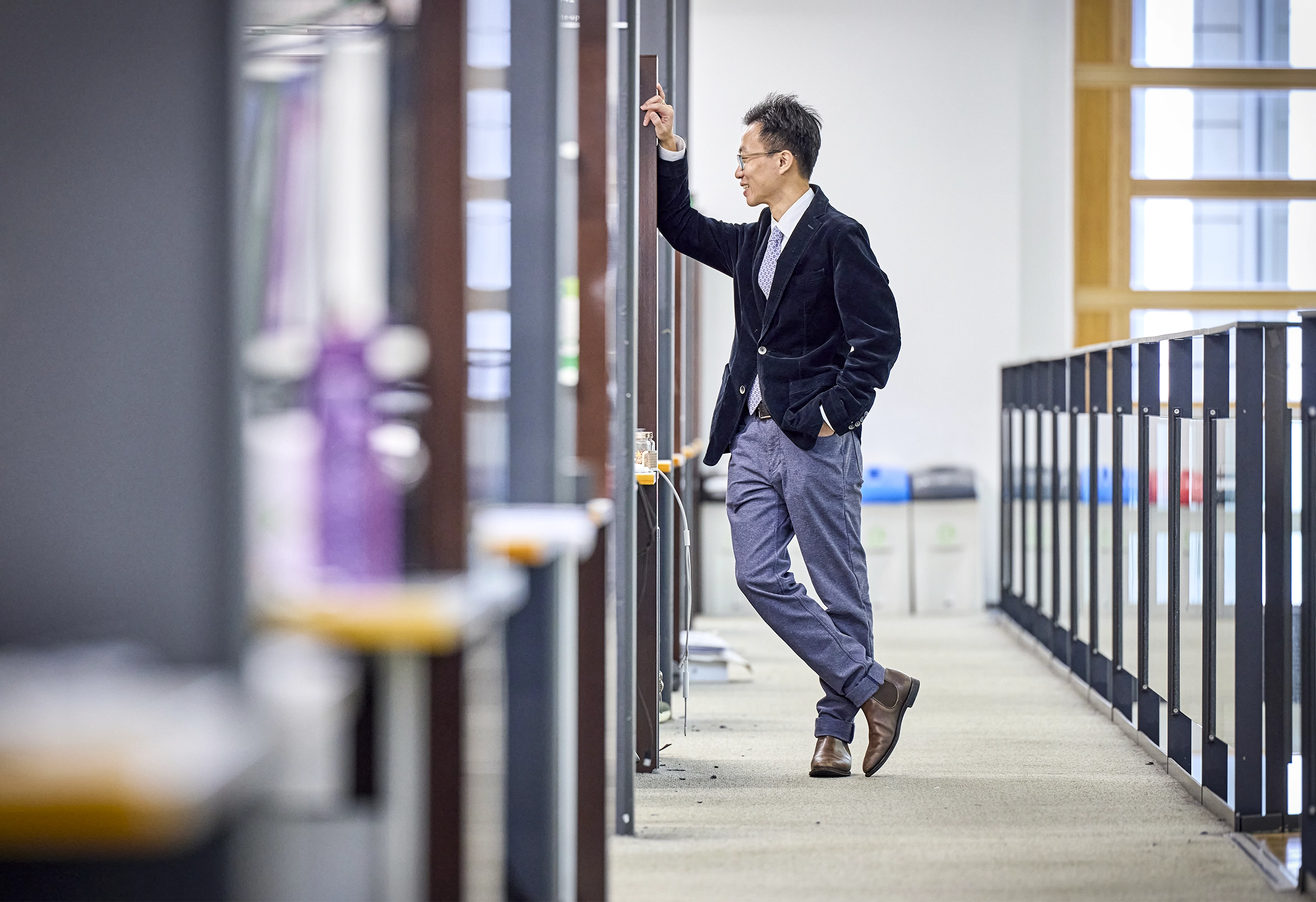
Synthetic biology isn’t only about creating new kinds of life, but also about better appreciating how life works, Cai said. “By building new genomes, new entities, it gives us a greater understanding of biology.”
Dave Phillips for Quanta Magazine
We programmed Escherichia coli bacteria to become biosensors for arsenic contamination in drinking water. If you regularly drink water which is contaminated by arsenite, you may have all kinds of problems, ranging from skin cancer to kidney cancer. [The engineered] bacteria could sense different levels of arsenite, up to five molecules per billion. They’re very sensitive. You can basically give the bacteria to local villagers in Bangladesh, ask them to add some water from a well, incubate it at room temperature, and tomorrow morning they can dip a pH test paper and see the color change. So it’s like a pregnancy test: very simple.
The arsenic biosensor was a huge hit at MIT. I vividly remember it was in November. I went to Boston to compete. Because we were the first team from Scotland, they made me dress in a Scottish kilt. It was cold, I can tell you — Boston in November, wearing a kilt.
That was the turning point of my career, really — looking at living organisms as a programming substrate.
How did you transition from bacteria to yeast?
I did my postdoc at Johns Hopkins University in Baltimore, where I met Jef Boeke, [a geneticist now at New York University]. He was running a small undergraduate course to synthesize the yeast genome. I said to him, “This will never get done before you retire, so we should make it an international effort.”
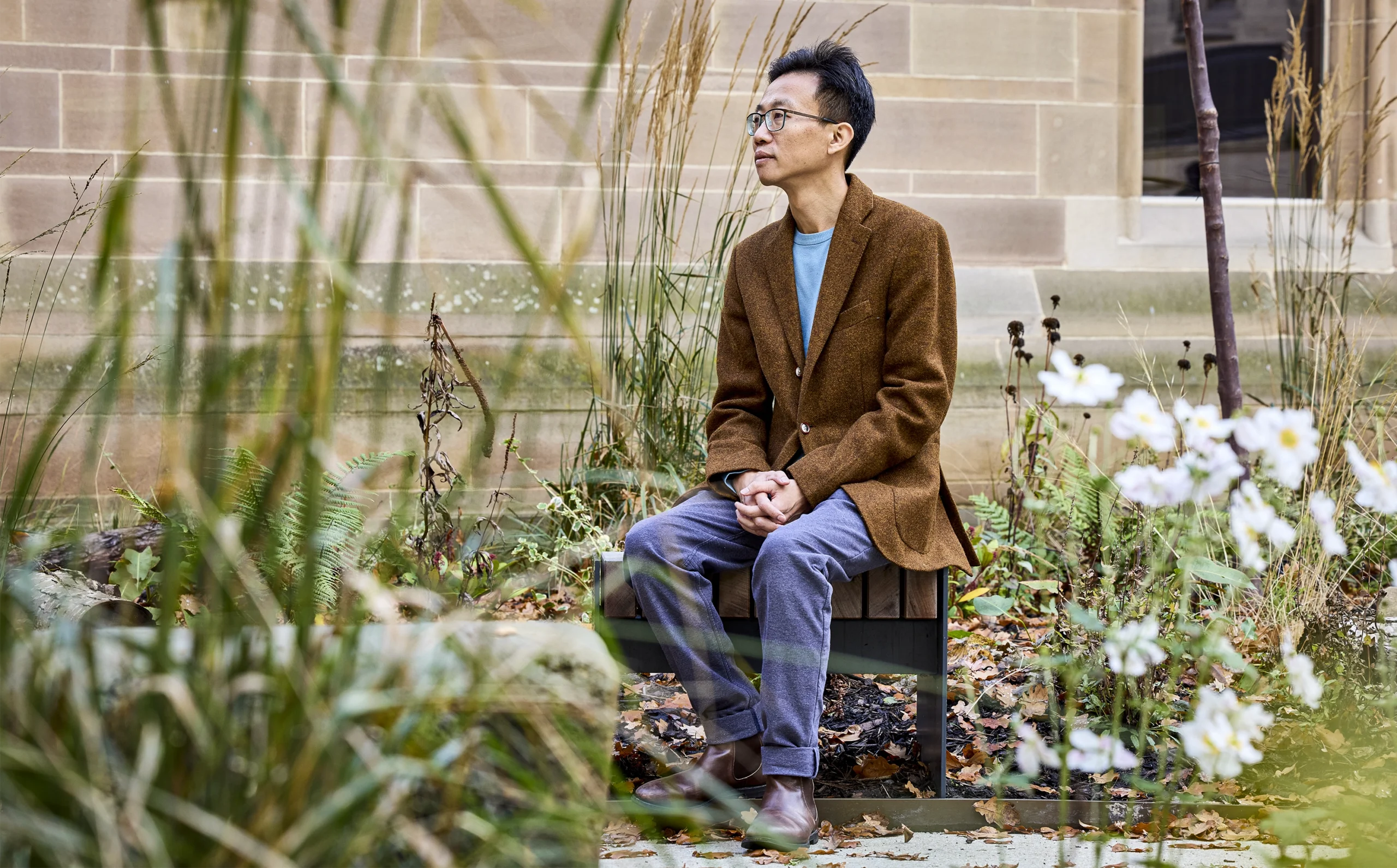
“If you want to build an airplane, you don’t go by mimicking what a bird does,” Cai said. “You first derive the first principles of aerodynamics, and based on aerodynamics, you build a plane. That’s why our plane does not look like a bird.”
Dave Phillips for Quanta Magazine
I helped Jef set up an international consortium with 10 universities from four continents, and we have been working together over the last decade. Every one of us gets a chromosome or two. We refactor the chromosome — we make it to our specification. And then finally we merge it into a new genome.
Yeast is a simple eukaryote, but it’s much more complex [than bacteria] in its genome. For one, bacteria have one chromosome; yeast has 16. The bacterial genome is much more compact. Yeast also has many additional elements.
Why synthesize the yeast genome?
The pursuit of the first synthetic genome is to really understand what the first principles of genome organization are. What I cannot build, I don’t understand [to paraphrase Richard Feynman]. This is the ultimate test. We really get to understand biology and life.
Let me put it another way. Once you can read a book, you can read many books. That’s the equivalent of sequencing the genome. But only when it comes to writing do you really put your understanding to the test. Reading a genome is passive. But when you start writing, that’s a creative process. You will have much better control over the entity you engineer.
You can then start thinking about reengineering life to address some of the very important questions in society today. And just to give you some examples: You can engineer the plant genome to be more resilient against climate change; you can engineer it to have better yields. This can address the food-shortage problem facing society. You can engineer, for instance, pig organs that are suitable for organ transplant. These are great examples of applications genome engineering can do for us.
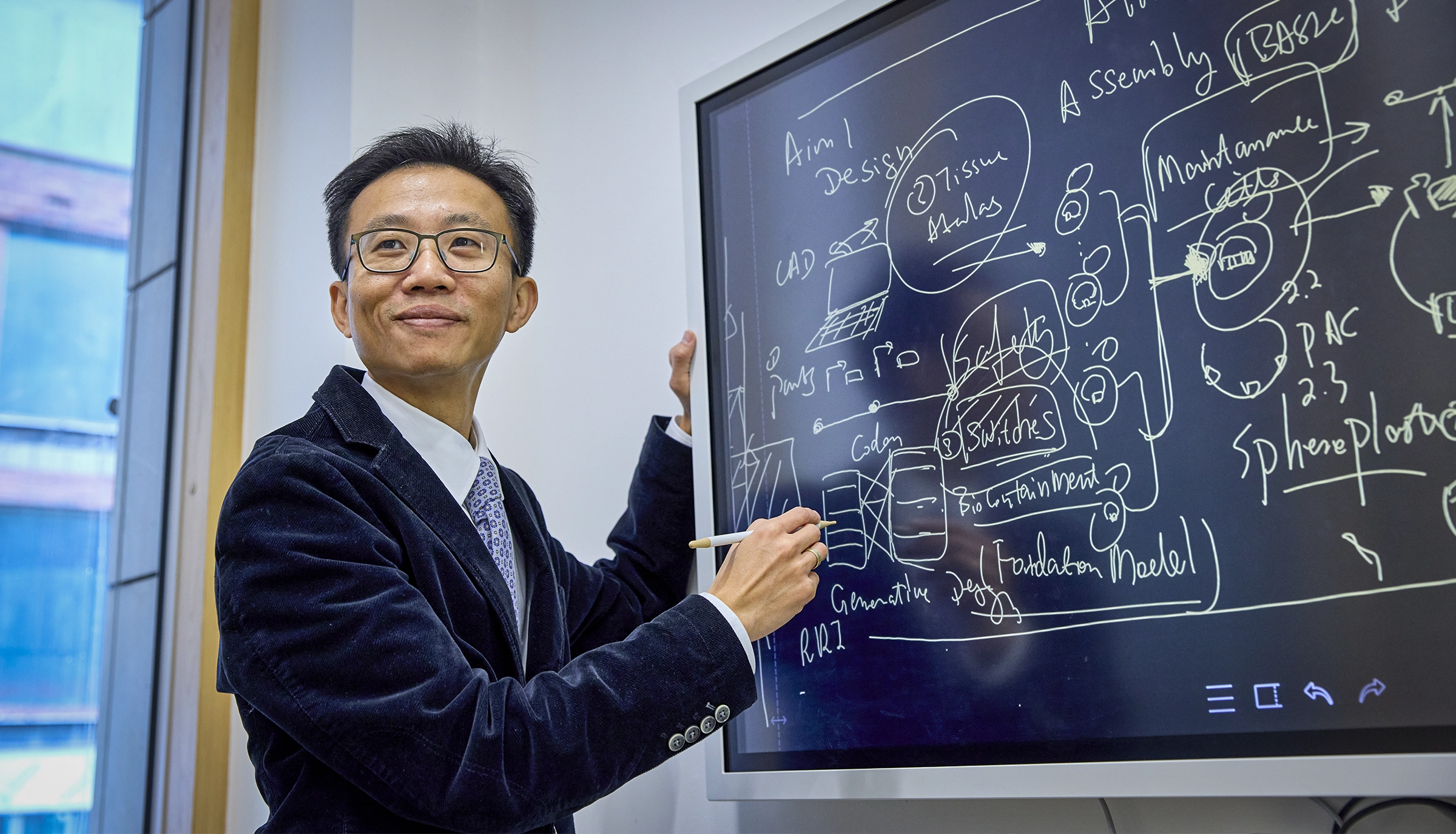
Cai brainstorms genetic design in his office at the University of Manchester. By creating synthetic eukaryotic life, he hopes to learn organizational design rules that make genomes work.
Dave Phillips for Quanta Magazine
With the current technology, you can make transgenic organisms by editing. But you do not really have complete freedom of expression. That’s because you are relying on natural templates to tinker with.
What’s your approach to writing the first draft of the synthetic yeast genome?
The way to write the genome is piece by piece. You take an existing book chapter; you rewrite the first paragraph, and then you put that into the cell. Now the yeast becomes your proofreader. The yeast will start reading your rewritten first paragraph and say, “Does this make sense?” If it doesn’t make sense, the yeast will complain. It’ll become sick, or it will become unviable.
You do that paragraph by paragraph, and eventually you end up with a new chapter.
Imagine that yeast has 16 chapters, which are its 16 chromosomes. So each of us [on the team], we take one chapter, and we write paragraph by paragraph. This is a bottom-up approach to rewriting the genome.
How are you coming up with the design blueprint of the new synthetic genome?
We don’t use Scramble to write the genome. But we use Scramble to devise new genomes.
If you see the yeast genome as a deck of cards, where each card is a gene, this Scramble system allows you to shuffle the order of the cards, to invert some cards, to throw away some cards, to duplicate some cards. The genome reshuffling technology Scramble gives you an opportunity to systematically sample all combinations possible. So instead of making one genome, you’re effectively making billions of genomes at the same time.
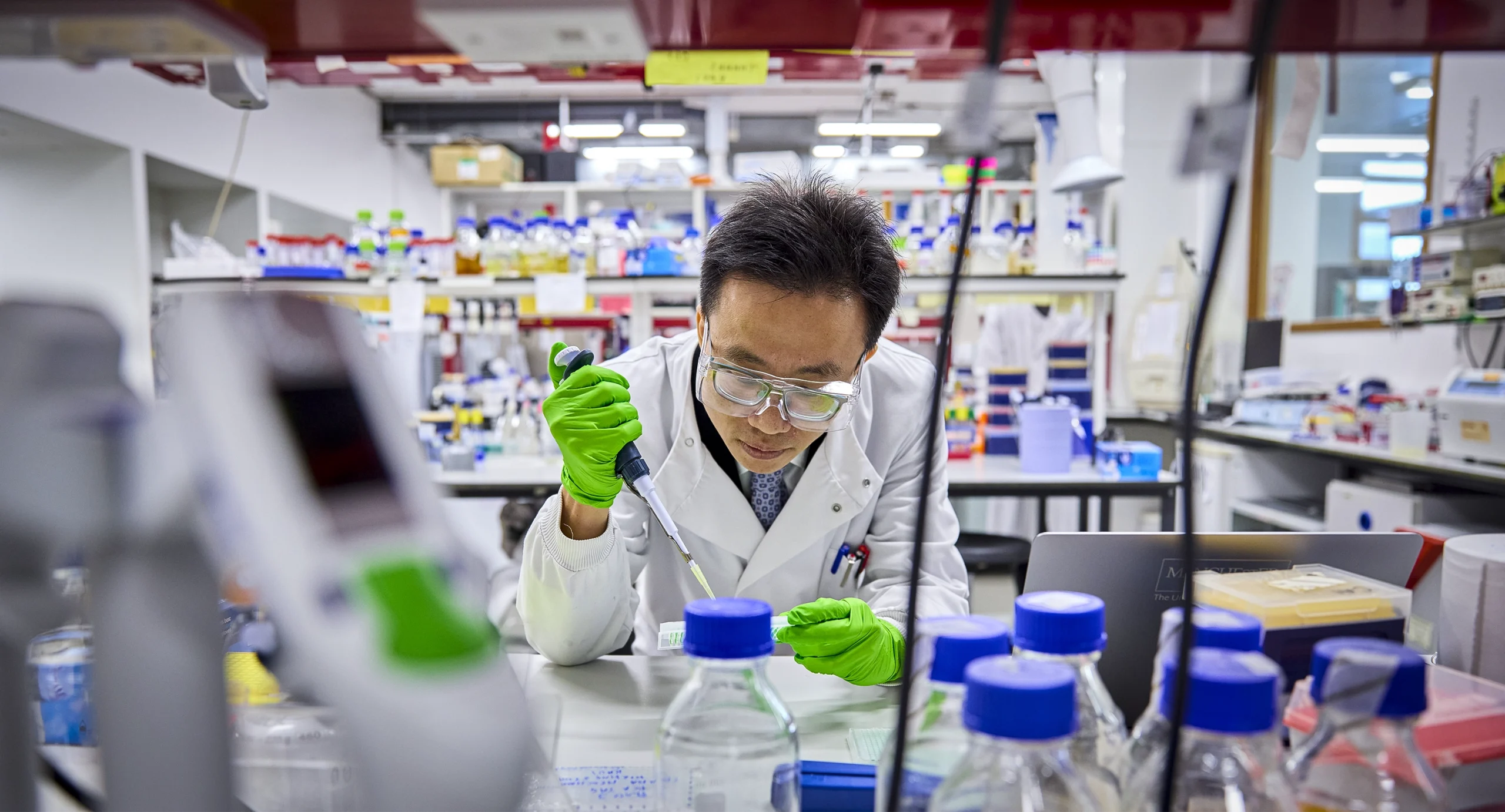
Cai uses a pipette in his laboratory. The synthetic biologist sees DNA as a programming substrate: Once he knows how to write it, he can reorganize the genome and use it to program living organisms with new traits.
Dave Phillips for Quanta Magazine
We have the capability to generate many alternative designs, and then we can select for the best performers. So let’s say I turn on this Scramble system and I generate all possible permutations of the genome. Then I ask a question, such as: Who can survive at 40 degrees Celsius? In that particular condition, the guys that survive are the guys which are truly interesting. They will never exist in nature. Then you can sequence them and say, “What kind of rearrangement do I need to give the yeast this special power?”
This technology allows us to practically evolve strains to our specification. It also gives us insight on how genes are organized to give us a particular characteristic. That’s the beauty of coupling precise engineering with direct evolution. The natural genome will not allow you to do that.
How exactly is the novel genome synthetic and different from the natural version?
It’s synthetic because all the DNA sequences are chemically resynthesized. They’re not coming from their natural inheritances. The genome is about 20% smaller than the wild-type genome. We get rid of the junk that is not useful. The sequence composition is drastically different from their parents’.
I’m happy to say all the synthetic chromosomes are really fit. That is surprising because every chromosome has thousands of edits, and we still managed to maintain really high fitness. That’s not just because we’re careful; it’s also because we’re being conservative. People were saying we’re aggressive because we put thousands of edits on each chromosome. But now we look back and say, “Actually, there’s so much plasticity in the genome.” You try to make all these changes, but cells still can take up all these tortures you impose on them. So if we’re able to do the next version, we should be much more aggressive.
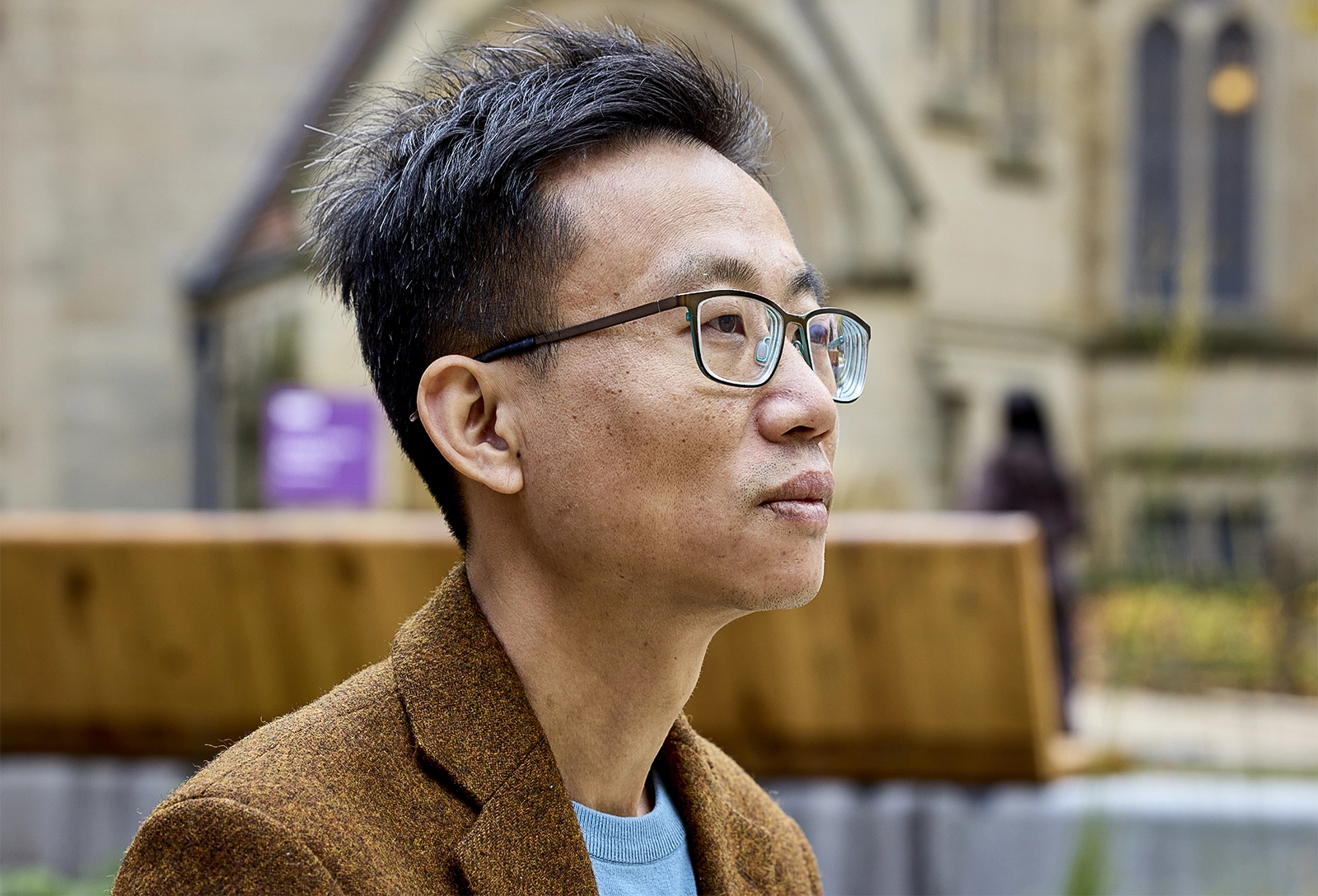
Cai imagines a future in which scientists can write synthetic genomes to create life that addresses societal problems such as climate change and disease.
Dave Phillips for Quanta Magazine
What’s next for this work?
I’m particularly excited about a new project in my group, which is to try to derive what’s the minimal genome. What’s the minimal set of genes which can sustain life? The way we are tackling this is, we’re taking this synthetic yeast and using Scramble to reduce the genome. Can we derive the minimal genome by scrambling out anything which is nonessential?
Last year, your team announced that the Synthetic Yeast Genome Project is 50% complete. What do you mean by that?
It’s the sheer number of DNA [nucleotides] that have been incorporated into the genome. If you look at yeast as a book, that’s 16 chapters. But each chapter is a different length; they’re not equal. We have integrated six and a half chromosomes, but these are larger chromosomes, 50% of the characters. We have the technology to replace the second half.
But you know, we might be surprised. We worry about what we call “synthetic lethality.” Maybe at some point when you change something here in one chapter, it’s fine; you change something here in another chapter, it’s fine. But they just cannot coexist in the same book. This is the biggest problem, that if we recombine multiple synthetic chromosomes together, you will see incompatibility between the edits on two chromosomes.
So how much longer now?
Every time I’ve been asked about it, I say 12 months from now. The last mile is always the most difficult. But it’s very encouraging. We are well on our way.
So, probably something like the end of 2025?
Ask me again next year.

